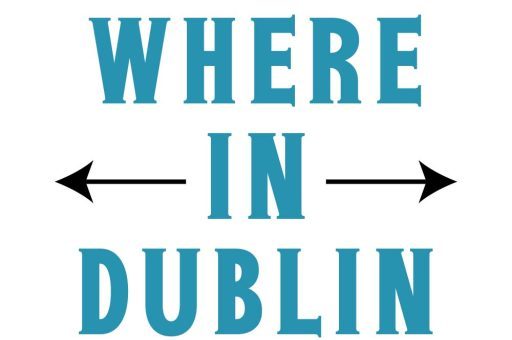Dublin is one of those cities that instantly pulls you in. It’s full of life, music, laughter, and stories waiting around every corner. You can feel its charm the moment you step onto its cobblestone streets. It’s a place where the past sits comfortably next to the present, where centuries-old buildings stand beside lively cafes and modern art spaces.
From my own personal experience, Dublin is a city that feels both warm and exciting at the same time. It has this natural rhythm, a mix of culture, kindness, and creativity, that makes you want to stay a little longer than planned. Whether you’re here for a few days or a few weeks, the city offers experiences that stay with you long after you leave.
Let’s walk through the Dublin that people truly love, not just the tourist spots, but the places and moments that give the city its unique spirit.
The Heart of Dublin: City Centre Adventures
Grafton Street, The Beat of the City
Grafton Street is Dublin’s pulse. It’s where locals and visitors blend together, walking past shopfronts, listening to buskers, and enjoying the city’s buzz. You’ll find everything here, from high-end boutiques to quirky local stores. But what really makes Grafton Street special is its sound. Music fills the air, from street performers playing violins to singers belting Irish folk tunes.
Grab a coffee from a nearby café, maybe Butler’s or Bewley’s, and just stroll. Watching the street come alive is part of the experience. Dubliners love to stop and chat, and you might find yourself pulled into an unexpected conversation that makes your day.
Trinity College – Dublin’s Treasure
A short walk from Grafton Street takes you to Trinity College, one of Europe’s oldest universities. Stepping through its gates feels like walking back in time. The old library is breathtaking — tall wooden shelves stacked with books that seem to whisper stories from centuries past.
The highlight is the Book of Kells, an illuminated manuscript created by monks over 1,200 years ago. It’s one of Ireland’s most prized possessions and a must-see. Even if history isn’t your thing, the artistry and detail will leave you amazed.
Temple Bar – More Than Just Pubs
Temple Bar often gets labeled as Dublin’s party zone — and yes, it’s full of music, laughter, and late nights. But it’s also home to culture, creativity, and color. The cobbled streets are lined with galleries, vintage shops, and cozy cafes.
If you love live music, every corner pub seems to have a band playing traditional Irish tunes. And even if you don’t drink, the energy is infectious. You’ll hear fiddles, tin whistles, and the hum of happy people. Visit during the day too — you’ll find small markets, local artists, and friendly chatter that’s just as lively as the night scene.
Dublin’s Deep Roots: History and Heritage
Dublin Castle – Layers of the Past
Dublin Castle isn’t just a building; it’s a timeline of Ireland’s story. Once the seat of British rule, it now stands as a symbol of independence and Irish pride. Walking through its halls, you can feel the weight of history — battles fought, peace restored, and a country rebuilt.
The castle grounds are open for tours, and they give a fascinating look into how Ireland transformed over the centuries. The gardens behind the castle are peaceful, offering a quiet break from the city’s movement.
Kilmainham Gaol – A Touch of Irish Resilience
If you want to understand the heart of Irish history, Kilmainham Gaol is where it hits hardest. This former prison tells the story of Ireland’s struggle for freedom. The walls here have seen pain, courage, and hope. Many Irish revolutionaries were imprisoned — and some executed — within these cold stone corridors.
Walking through the cells gives you chills. But it also fills you with respect for the people who fought for Ireland’s identity. The guided tours are powerful, honest, and emotional.
St. Patrick’s Cathedral – A Place of Calm
Built in the 12th century, St. Patrick’s Cathedral is the largest church in Ireland. It’s both beautiful and deeply peaceful. The stained-glass windows cast colorful light over the stone floors, creating a quiet space for reflection.
Jonathan Swift, the author of Gulliver’s Travels, served as dean here and is buried inside. The cathedral grounds are a nice place to pause, especially if you’ve been exploring all day.
Local Flavor: Dublin’s Food and Drink Scene
Breakfast and Brunch Spots
Dublin knows how to start the day right. There’s nothing better than a full Irish breakfast — eggs, sausage, bacon, beans, and soda bread. It’s heavy, yes, but it’s also pure comfort food.
If you’re after something lighter, cafes like Brother Hubbard, Two Boys Brew, or Beanhive Coffee on Dawson Street serve creative dishes with a local twist. Try their poached eggs with smoked salmon or homemade granola with honey from Irish farms.
Lunch with Local Vibes
Dublin’s food scene has evolved beautifully. You’ll find local markets and small eateries serving honest, hearty meals. The Woollen Mills, near the Ha’penny Bridge, is a favorite — offering everything from stews to sandwiches that taste like home cooking.
Markets like Dublin Flea Market or Temple Bar Food Market are perfect for trying street food and artisanal treats. Grab a bowl of Irish chowder or a warm pasty and eat as you wander.
Pubs, Breweries, and Irish Pints
Let’s talk about Guinness — Dublin’s most famous drink. Visiting the Guinness Storehouse is a rite of passage. The museum takes you through the brewing process and the story behind the brand. The best part? The Gravity Bar on the top floor, where you get a pint with panoramic views of the city.
But Dublin isn’t all about Guinness. The craft beer scene is thriving too. Breweries like The Porterhouse and Rascals Brewing Co. are giving a new edge to Irish beer culture.
Exploring Dublin’s Neighborhoods
The Liberties – Old Dublin Soul
The Liberties is one of Dublin’s oldest areas and holds a raw, authentic charm. It’s home to St. Patrick’s Cathedral, the Teeling Whiskey Distillery, and a mix of markets, street art, and friendly locals. It’s less polished than the city center — and that’s exactly why it feels so real.
Here, you’ll find the Liberty Market, a lively spot for bargains and chatter. Locals sell everything from clothes to home goods. It’s noisy, colorful, and full of heart.
Docklands – Modern Dublin
The Docklands area shows how much Dublin has grown. Sleek glass buildings line the River Liffey, and trendy restaurants fill the area. The Samuel Beckett Bridge, shaped like a harp, is a stunning sight at night.
If you like contemporary architecture and riverside walks, this part of Dublin is worth exploring. It’s also home to EPIC: The Irish Emigration Museum, a high-tech, interactive experience that tells the stories of Irish people who moved abroad.
Stoneybatter – Local Favorite
Once a working-class neighborhood, Stoneybatter has become one of Dublin’s coolest areas. It’s full of personality — vintage shops, bakeries, and cozy pubs fill every corner.
People love Stoneybatter for its relaxed vibe. You can have brunch at Love Supreme, then stop for a pint at L. Mulligan Grocer, a gastropub with incredible food. It’s a great area to see Dublin’s creative side.
Parks and Nature: Breathing Spaces in the City
Phoenix Park – Europe’s Hidden Gem
Phoenix Park is massive — one of the largest city parks in Europe. It’s so big you might even spot deer roaming freely. It’s also home to the Dublin Zoo, the Presidential Residence, and plenty of walking trails.
Bring a picnic, rent a bike, or just sit under a tree and watch the world go by. It’s a calm, green escape right inside the city.
St. Stephen’s Green – City Center Calm
Right beside Grafton Street sits St. Stephen’s Green, a perfectly manicured park filled with fountains, flowers, and people relaxing on benches. During sunny days, it’s packed with people eating lunch or reading books.
It’s the ideal place to take a break between sightseeing. The park’s layout, complete with ponds and pathways, feels like something from a classic painting.
Culture and Creativity: Dublin’s Artistic Side
Dublin Writers Museum and Literary Pubs
Dublin’s literary history is huge. Writers like James Joyce, Oscar Wilde, Samuel Beckett, and W.B. Yeats all called this city home. The Dublin Writers Museum celebrates that legacy with manuscripts, letters, and personal items from these icons.
There’s also a Literary Pub Crawl, which mixes storytelling with Irish humor and pints — a fun way to experience Dublin’s words and wit.
Theatres and Live Performances
Dublin’s love for theatre runs deep. The Abbey Theatre, founded by W.B. Yeats, is Ireland’s national theatre and still hosts incredible productions. There’s also the Gaiety Theatre, perfect for musicals, comedy, and dance shows.
If you prefer something smaller, the Smock Alley Theatre in Temple Bar has a cozy, intimate atmosphere that connects you directly with the performers.
Music Everywhere: Dublin’s Soundtrack
Music is Dublin’s heartbeat. It’s not just something you hear in pubs — it’s part of the city’s DNA. Street performers play everything from traditional Irish folk to rock covers. Venues like Whelan’s, The Cobblestone, and Vicar Street showcase local and international acts.
At The Cobblestone, traditional Irish sessions happen almost every night. You’ll see musicians gathering around tables, playing fiddles, flutes, and bodhráns — no microphones, just pure music and shared passion.
Hidden Gems: Dublin Beyond the Obvious
The Little Museum of Dublin
This museum tells the city’s story through everyday items — photos, letters, posters, and small personal treasures. It’s funny, heartfelt, and full of personality.
Marsh’s Library
Tucked beside St. Patrick’s Cathedral, Marsh’s Library is a hidden wonder. It’s one of the oldest public libraries in Ireland, and stepping inside feels like time travel. Shelves of ancient books, the smell of old paper, and creaky floors make it magical.
Iveagh Gardens
Not far from St. Stephen’s Green, these gardens are a peaceful retreat often missed by visitors. Fountains, statues, and hidden walkways make it a secret escape in the city.
Festivals and Events Worth Catching
Dublin loves a good celebration. The St. Patrick’s Festival in March paints the city green, but there’s more than just parades — it’s about music, culture, and community.
In summer, you’ve got Taste of Dublin, Longitude Festival, and Dublin Pride bringing energy and color to the streets. Autumn welcomes Culture Night, when galleries and museums open late for free events.
And for literature lovers, Dublin Book Festival is a treat, showcasing the best Irish authors and stories.
Day Trips from Dublin
If you have time, explore beyond the city. Ireland’s countryside is just a short train or bus ride away.
Howth: A seaside village with cliffs, lighthouses, and fresh seafood.
Malahide Castle: A stunning historic castle surrounded by gardens.
Glendalough: Ancient monastic ruins set among lakes and hills.
Bray: A charming coastal town with a scenic cliff walk.
Each of these spots gives you a different taste of Ireland’s beauty, and they’re all easy to reach from Dublin.
Why Dublin Stays With You
There’s something special about Dublin. It’s not just the landmarks or the pubs — it’s the people, the stories, and the feeling of being welcomed. The city has a heartbeat that matches your own, and it makes you feel like part of it, even if you’re only visiting.
Based on my overall experience, Dublin teaches you that culture isn’t something in museums — it’s alive in every laugh, every song, every chat over tea or pint.
If you ever get the chance, go. Walk its streets, meet its people, and feel its spirit. Because Dublin isn’t just a place you visit — it’s a place that stays with you long after you’ve left.



